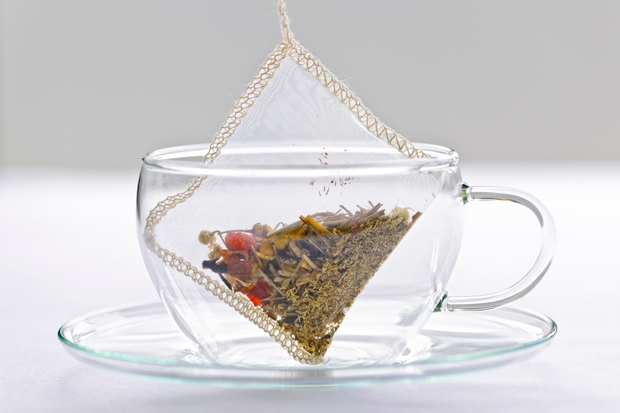Inventor of the silky teabag, take a bow. You have achieved something that until now no one would have thought possible. You have taken an item so simple, so perfect, so completely suited to its purpose that the idea of ruining it had occurred to literally no one — and you have ruined it. You have ruined the teabag.
I first encountered this abomination a couple of years ago. Shoreditch, inevitably, in one of those places with a blackboard proclaiming their Instagram handle and a witty quote. Ordering a tea, I was presented with a cup, a pot of hot water and a teabag. I put the bag into the water, noticing as I did so the silky texture of its material, more like plastic than paper. It felt nice, a pleasing sensation on the fingertips.
Only after I’d waited for a couple of minutes, then poured the first bit of tea, did the problem become clear. The liquid emerging from the pot wasn’t tea, it was water. A vaguely different colour of water, perhaps, but definitely nothing that could qualify as tea. So I pressed the bag with the spoon, whirled it round a bit, pressed again and poured some more. Still water. Possibly a couple of shades further along the Farrow and Ball colour chart, possibly heading towards ‘faint tan’, but taste-wise there was nothing.
So I gave it a bit longer, and pressed the bag and whirled the bag and pressed the bag. But the bag wasn’t having it. Finally, I realised that no matter how long you gave this thing, it wasn’t going to release the flavour of the leaves it contained. The material kept that flavour trapped inside. And this, I would argue, counts — in a teabag — as failure.
It’s the way with so much modern design. Look for something that doesn’t need changing, then change it. The tragedy is that there is so much that does need changing. Coffee did, 20 years ago. Back then if you ordered a coffee they tipped something that could very well have been gravel painted brown into a mug and poured water on it. Then along came Starbucks and company. Say what you like about the chains’ poncery (names on cups and all that), they have at least given us coffee you can actually drink.
Tea itself needed changing. The leaves, I mean. There used to be only one type — the variety we now call ‘English breakfast’ (or, if you prefer, ‘builder’s’). Then Earl Grey appeared, and Darjeeling, and lapsang souchong and all the rest. Wonderful — choice is great, change is great. But the one thing that didn’t need changing was the teabag. The material from which it was made did its job just fine. You added water, you got tea. You wanted it stronger, or quicker? You squeezed the bag. End of story. Until this new material came along. What is it, by the way? Some by-product of the Apollo space programme? Perhaps the stuff they insulated the fuel tanks with to stop any liquid leaking out. It would certainly have done the job.
So know this, Mr Silky Teabag: you are not a designer, you are someone who wants to be a designer. Real designers look for a problem that needs solving, then they solve it. That guy who invented the wind-up radio. The person who first put wheels on suitcases. The genius at Apple who realised that your phone could have a virtual keyboard that appeared on the screen only when you needed it. In fact that’s the very best sort of design — the solution to a problem we didn’t even recognise as a problem. As Steve Jobs always said, it was his role to show the consumer what was possible, not listen to what they wanted. In this he was following Henry Ford: ‘If I had asked people what they wanted, they would have said faster horses.’
But the silky teabag? That’s what happens when someone sees a solution and turns it back into a problem. And it’s not limited to the hipster hutches of Shoreditch. The other day I encountered one in Costa. The silky teabag is on the march. Soon it’ll reach your bog-standard caff. And then where will we be? A nation deprived of our cuppas, that’s where. A nation infused with anger that our water won’t infuse with tea.
So I’m making preparations. From now on I’m going to copy those Brits on package holidays to Spain in the 1970s and carry my own teabags at all times. They’ll be my protection against this trouble that’s brewing.






Comments